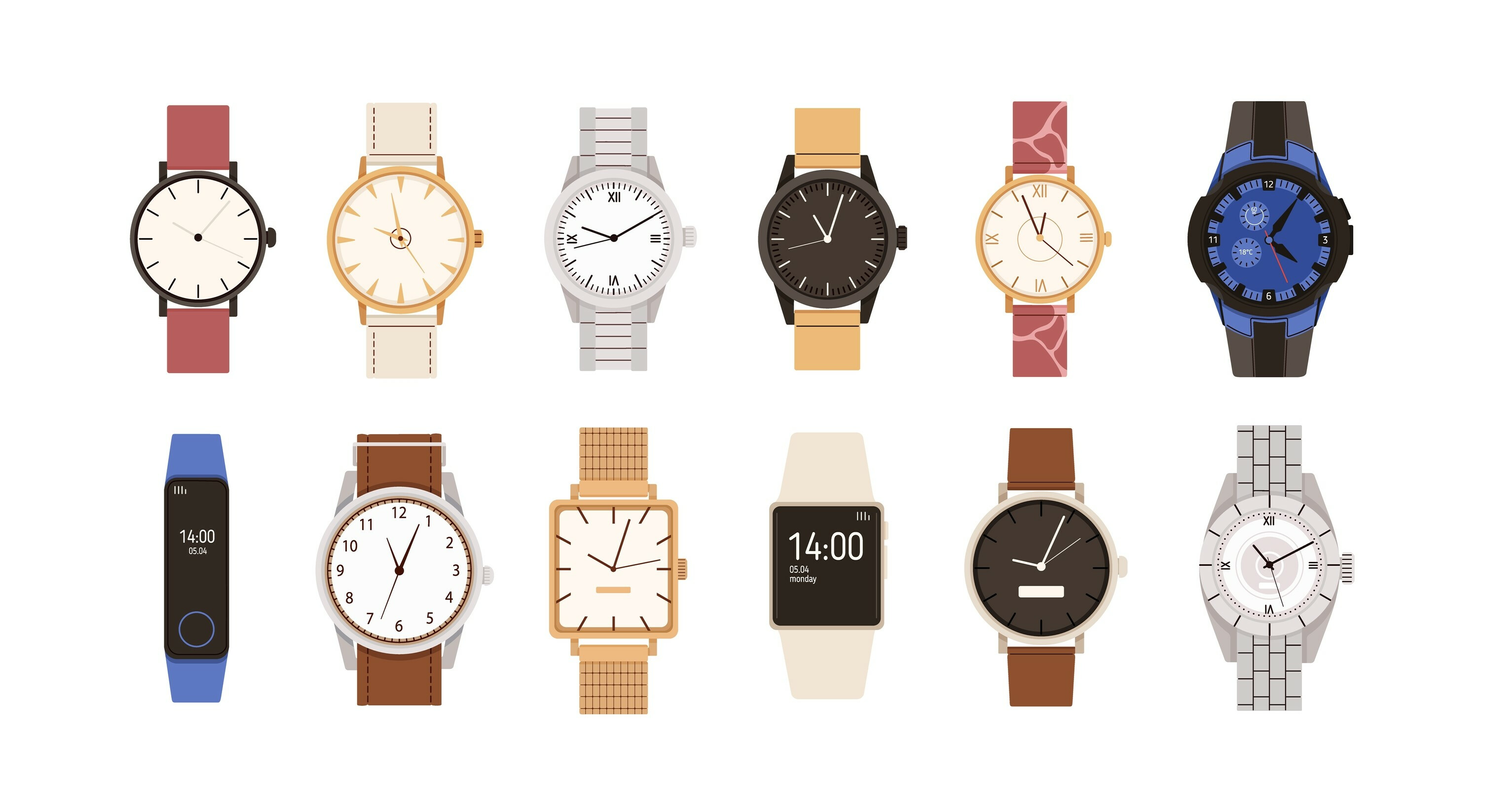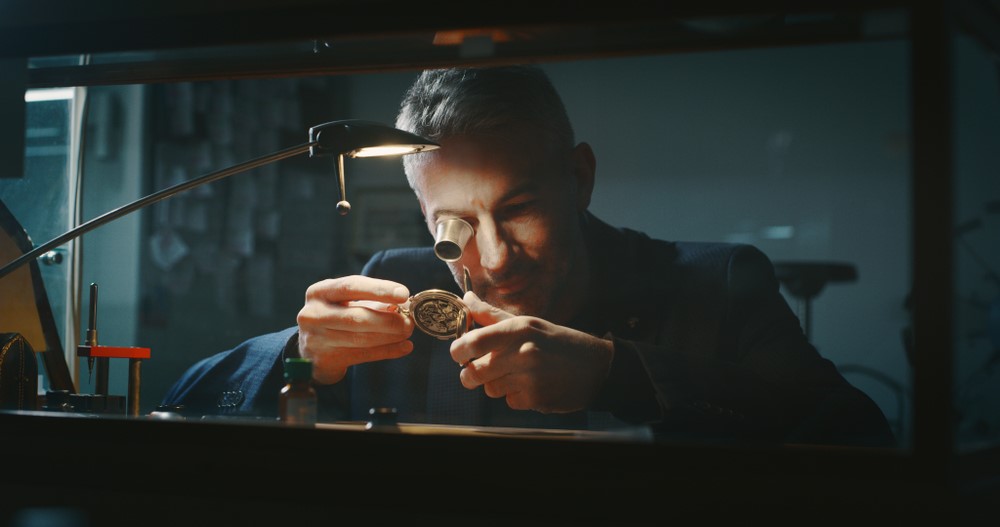
Product Spotlight: Watches
Custom Watches make excellent incentives. See how these classic timepieces have evolved.
Rick Cundiff
Time – a simple word, a complicated meaning. It dominates our lives, our very waking hours. For millennia, humans have kept track of time in many ways –sundials, moon phases, calendars, clocks.
Over the centuries, our concept of schedules and timekeeping evolved. Clocks and watches became a necessity in our busy lives.
The watch, from its humble beginnings, has become a required wardrobe accessory, a fashion statement, even a good promotional product. Let’s look at how these complex devices became such an integral part of life.
Watches Are Older Than You Think
You might think watches are a comparatively recent invention. Not quite. In fact, one of the first individuals – possibly the very first -- to receive a wristwatch was Queen Elizabeth I of England.
Mechanical clocks date back to the 14th century. Originally driven by a weighted mechanism, they tended to be large. Installed in cathedrals, they often rang bells to sound the hour.
In the 1400s, spring-powered clock mechanisms became available. These replaced the driving weight of larger clocks with a mainspring to power the mechanism. The mainspring turned gears to move the hour hand. That enabled the creation of smaller clocks.
Smaller is Better
As skilled craftsmen such as gunsmiths, jewelers and locksmiths became ever more proficient at creating precise mechanisms, some moved into watchmaking. They soon began making clocks smaller and smaller, eventually creating one small enough to be worn from a pendant around the neck.
Those early watches were worn more as jewelry items than as timepieces, a way to denote the wearer’s social status. The original design, often attributed to a Nuremberg, Germany clockmaker, was commonly known as a “Nuremberg egg” for its oval shape.
Religion and The Swiss Watch
In the 1500s, the Protestant Reformation swept over Europe, and with it new beliefs. Reformist theologians such as John Calvin promoted austerity and opposed outward ostentation. As a result of Calvin’s efforts, the city of Geneva banned the wearing of jewelry.
That forced skilled goldsmiths and jewelers to find another line of work. Many chose watchmaking as a venue to continue their high-precision skills. That was the birth of the Swiss watch industry.
Watchmaking Expands, Precision Increases

Mechanical clocks and watches are complex machines. Early clocks were far from ideal. Unlike a weight operated mechanism such as the one used by a grandfather clock, a mainspring loses energy as it runs down. That makes the clock less and less accurate as the day goes on, sometimes as much as several hours per day.
That changed in the late 1600s. The addition of a balance spring increased the timepiece’s accuracy to within about 10 minutes per day. That was accurate enough to enable watchmakers to add a minute hand. Up to about 1680, watches only had an hour hand.
As their accuracy increased, watches became more popular. Watchmakers created the round pocket watch, which a gentleman could slip inside a waistcoat pocket. Watches remained a luxury item, and through the 17th and 18th centuries, the British dominated the industry.
In the 1840s, American companies began production in Massachusetts. The U.S. companies soon introduced jeweled bearings and other improvements that further increased watch accuracy. Mass production techniques reduced costs and further developed the U.S. market.
The Railroads Standardize Time
Before the advent of railroads, time schedules varied from city to city. Each city determined when noon was in their own city by when the sun was directly overhead. Noon in Boston occurred earlier than noon in New York, and earlier in New York than Philadelphia.
This created chaos once railroads started moving goods and people across the country. The differences made it too hard to schedule passenger and freight departures and arrivals uniformly. The New York Times reported in April, 1883 that the United States had 56 different time standards across the country.
By the end of that year, the railroads had adopted the series of time zones that we know today. Businesses across the country followed suit, and in 1918, the federal government adopted the Standard Time Act. The rest of the world soon followed.
World War I And Wristwatches for Men
Until the 20th century, men continued to carry pocket watches, while wristwatches were for women. World War I changed that.
Improvements in other technologies – radio and telephone – enabled military leaders to precisely coordinate strategy. But soldiers had to have a way to quickly note the time. Wristwatches gave them a way to do that without having to waste precious time reaching for a pocket watch when seconds counted.
The New York Times noted in 1916 that most Americans of the era saw wristwatches as “something of a joke.” The war use by soldiers in the trenches and aviators in the air made it acceptable for men to wear watches on their wrists.
Power To the Watch – The Electric Era and Beyond
In the 1950s, Hamilton Watch Company introduced the electric watch. Powered by a small battery, it didn’t require winding. Depending on the type of circuitry used, they could be more accurate than even high-end Swiss watches of the day.
The next generation premiered in 1969, when the Japanese firm Seiko introduced the world’s first commercially available quartz watch. The electronic watches regulated by a quartz crystal are far more accurate than any mechanical watch, up to plus or minus one second a year. Then in the 1970s, along came digital watches, with LCD or LED displays and no moving parts.
The Quartz Crisis
While the Seiko was a breakthrough for consumers, it created a crisis in the Swiss watch industry. The Japanese watch was far more accurate and more affordable than the Swiss timepieces of the era.
Swiss watchmakers were slow to adopt the new technology, relying instead on the traditional mechanical designs. In the meantime, Japanese and American companies moved forward with quartz designs.
As quartz watches began to dominate the market, the Swiss companies’ market share declined precipitously. Many long-time producers disappeared. Employment in the Swiss industry dropped by more than two-thirds.
A new brand emerged in 1983 to save the industry, when two of the largest Swiss manufacturing groups merged to form Swatch. Aimed at the lower end of the market, the new brand introduced a line of affordable, plastic-cased quartz watches that soon became fashion icons.
While Swatch became known as an affordable luxury, it also boosted the high end brands Swiss makers are known for. The parent Swatch Group owns classic brands such as Omega, Tissot, and Hamilton. Two of its brands, Blancpain and Breguet, were founded in the 1700s.
The 21st Century: The Smartphone Era

In the early 2000s, timekeeping began to move back to the pocket. As many people adopted smartphones, fewer wore watches. But the release of the Apple Watch and similar devices in recent years has prompted a resurgence in wearable time.
The Swiss watchmakers that remain are still producing top quality watches, both quartz and mechanical. While some are relatively affordable, others attain collectible status, retailing for up to a quarter-million dollars.
Promotional Watches
We noted earlier that custom imprinted watches make good promotional items. Obviously, that’s not going to be a $250,000 Audemars Piguet. But good, down-to-earth watches are surprisingly economical, customizable, and make excellent executive gifts. They’re ideal for sales awards, anniversary celebrations, and even as group awards for high-achieving teams.
As for the future of wristwatches, only time will tell. But learning about the fascinating history of the industry is definitely time well spent.
Rick Cundiff
Content Director, Blogger
Rick Cundiff spent 15 years as a newspaper journalist before joining TJM Promos. He has been researching and writing about promotional products for more than 10 years. He believes in the Oxford comma, eradicating the word "utilize," and Santa Claus.
